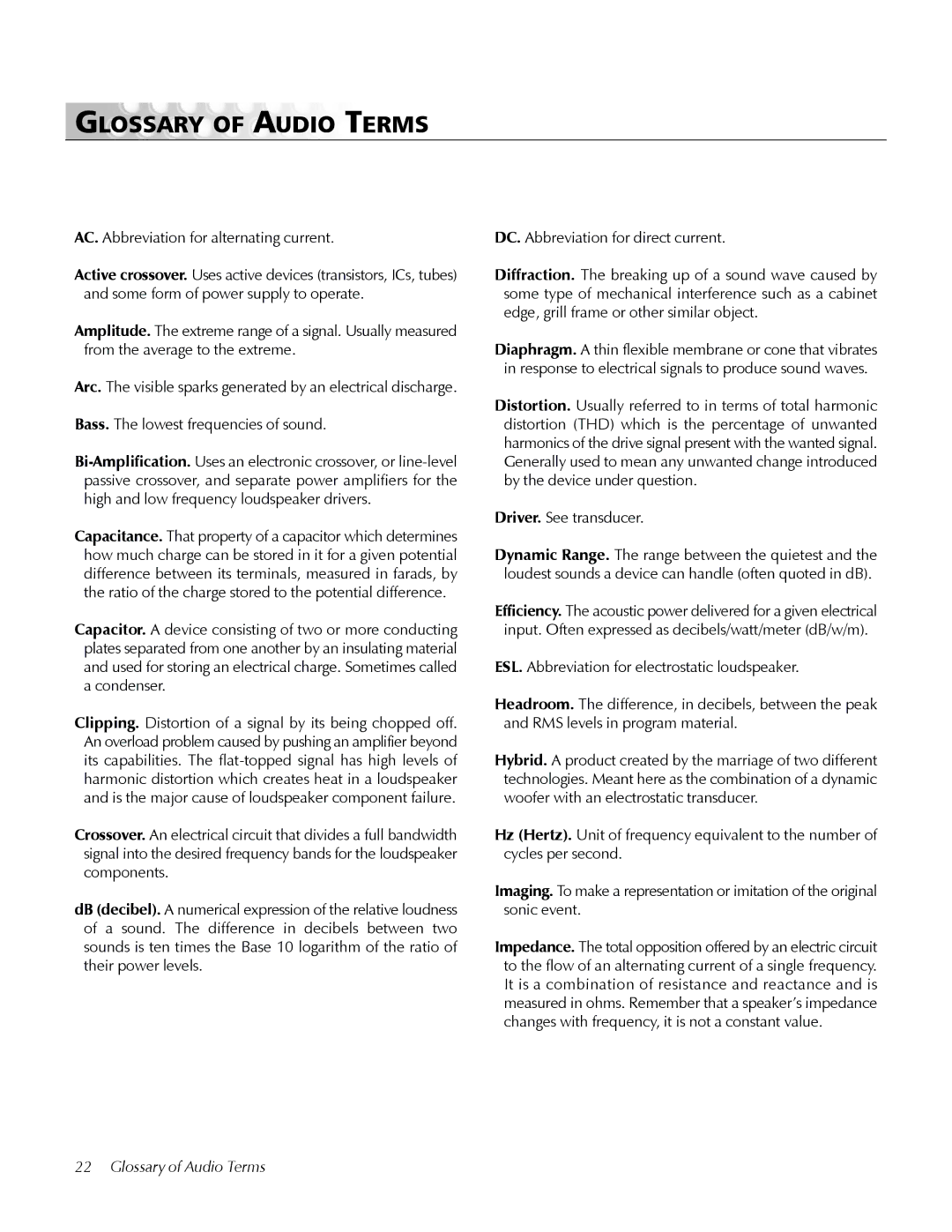Center Channel speaker specifications
The MartinLogan Center Channel speaker is a sophisticated audio component designed to deliver a superior listening experience, particularly in home theater setups. Known for its exceptional clarity, dynamic range, and immersive soundstage, this speaker exemplifies high-end audio engineering.One of the key features of the MartinLogan Center Channel speaker is its use of electrostatic technology. This innovative design employs a thin, lightweight diaphragm suspended between two conductive panels. This allows for superior transient response and reduced distortion, delivering audio that is both clear and detailed. The electrostatic driver provides a unique sound reproduction that immerses the listener in a rich auditory experience, making dialogues crisp and precise.
In addition to its electrostatic driver, the MartinLogan Center Channel speaker typically includes advanced woofers that complement the high-frequency performance. These woofers are engineered to handle lower frequencies effectively, ensuring a balanced sound profile. The integration of these technologies results in a seamless blend of highs and lows, allowing for a full-spectrum audio experience.
The speaker also features a precision-engineered cabinet designed to minimize resonance and reduce colorations. This construction ensures that the sound produced is true to the original recording, preserving the nuances of music and film soundtracks. The cabinet is usually finished to high standards, making it a visually appealing addition to any home theater setup.
Another important characteristic of the MartinLogan Center Channel speaker is its adjustable crossover settings. This allows users to tailor the speaker's performance to fit their specific room acoustics and personal preferences. By fine-tuning the crossover frequency, enthusiasts can achieve an optimal balance across their entire audio system.
Moreover, the speaker is designed with versatility in mind. Its sleek and aesthetically pleasing design allows it to blend seamlessly with modern home decor, while its robust build quality ensures longevity. Whether used in a dedicated home theater, a living room, or a music listening space, the MartinLogan Center Channel speaker delivers an exceptional audio experience that truly elevates the enjoyment of film and music. With its commitment to innovation, craftsmanship, and performance, the MartinLogan Center Channel speaker stands as a premier choice for serious audiophiles and home theater enthusiasts alike.
